Foundation for Rural & Regional Renewal (FRRR)
FRRR, a one-of-a-kind Australian charity, has granted a record amount of $19.8 million to remote, rural and regional Australia during a year when rural communities have dealt with the ongoing impacts of COVID, the legacy of bushfires and drought and some of the worst flood events on record.
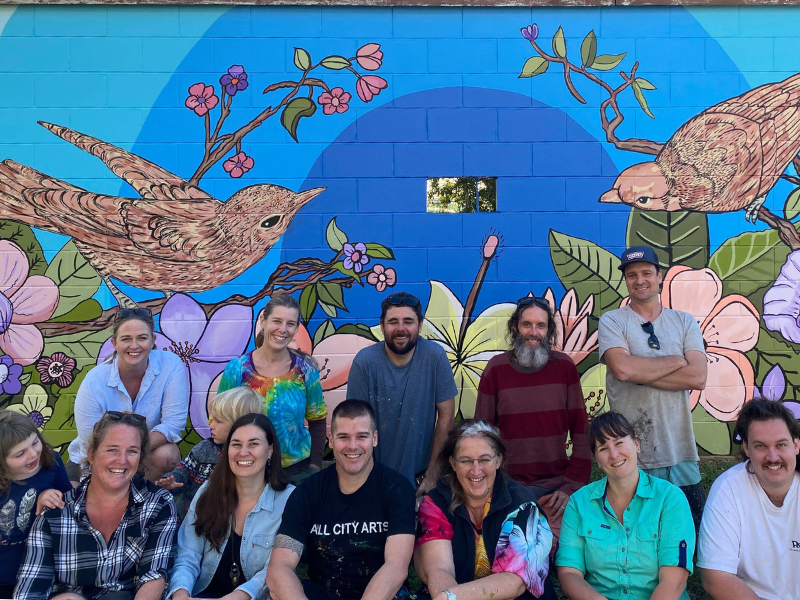
Having operated for 22 years, FRRR is the only national foundation specifically focused on ensuring social and economic strength in rural Australia. Their aim is to ensure that community groups and local not-for-profit organisations in these areas have the resources and tools they need to create sustainable, vibrant remote, rural and regional communities.
As reported in their recently released 2021/22 annual review, last financial year, FRRR awarded 991 grants to projects in 526 unique locations across Australia. Of the total $19.8 million granted, more than $12.3 million went to communities that were either recovering from or preparing for natural disasters like flooding, cyclones, drought and bushfires.
Another notable statistic is that for every $1 donated by FRRR, an additional $1.54 was generated in-kind or in cash, meaning that the total value of projects supported was more than $50 million.
FRRR CEO Natalie Egleton said that it was inspiring to be able to support so many community groups serving their communities during such a tough year.
“The last financial year brought a lot of disruption and hardship for remote, rural and regional communities across the country. From pandemic restrictions and floods to cyclones and the devastating fallout from bushfires, each community grappled with its own unique set of challenges, yet we saw common themes in each and every community we worked alongside during the last year. Generosity, agility and strength.
“To see locals and community leaders rallying together and continually stepping up to the plate to serve their communities truly is inspiring – particularly after the last couple of years,” said Ms Egleton.
Ms Egleton also spoke about the generous support of FRRR’s donor partners and supporters who helped to make their work possible this year.
“At FRRR, we work with an incredible network of organisations and philanthropic leaders who share our vision for a more vibrant, resilient and revitalised remote, rural and regional Australia and we are honoured that these organisations and philanthropic leaders continue to put their trust in FRRR. The past 12 months have been difficult for businesses and organisations of all shapes and sizes, yet the way our corporate and philanthropic partners continue to show up and show their support for rural Australia speaks volumes about the spirit of generosity and charity that’s embedded in our culture.
“This year saw the introduction of some new partnerships as well as the renewal of some long-standing partnerships. In particular, this year marked the 20-year anniversary of our partnerships with ANZ and Gardiner Dairy Foundation, both of which were major milestones,” Ms Egleton concluded.
You will find FRRR’s FY2020/21 Annual Review at www.frrr.org.au/AR22
On Arrernte Country
You’ve heard of the connecting and positive power of dance, right? Well, GUTS Dance Central Australia knows all about it – and knows it works. They saw an opportunity to use dance as a way to celebrate local diverse cultures in Alice Springs and, as the only contemporary dance organisation within a 1,500 km radius, this was squarely in their domain!
‘Alice’ as it’s known colloquially, is home to 25,000 residents, however there are no other towns or cities closer than 400 km away. Social cohesion can be difficult here, with divisions in the community “primarily based on race and historical disadvantage fuelled by a lack of understanding and exchange”. GUTS believed that they could address this and break down negative misconceptions through better visibility of minority populations through the art of dance.
“We see dance as a universal language that crosses cultural boundaries. People who are part of these dance groups are often newly arrived to Australia and they find cultural connection within the dance groups, or are First Nations Australian’s on whose land we live, and whose culture needs to be seen, respected and learned about.”
For much of the year in Alice, it’s too hot to have outdoor activities during the day, and there was only one significant event – Harmony Day – that brought together cultures in Alice.
They thought it was about time for another offering and started planning. As part of SPRING.LOADED.DANCE, GUTS’ inaugural contemporary dance festival, they would deliver a Community Dance Day (CDD), during which social and cultural dance groups could showcase their dancing, and audiences could join in!
Using a $9,800 Strengthening Rural Communities grant funded by FRRR, the festival team identified local groups to be involved, liaised with participants, undertook the planning for setup and packdown of the site and marketed the event. The CDD event took place on the Council Chamber Lawns in the CBD of Mparntwe/Alice Springs. It included Tinkerbee Arrernte Dancers, who got to showcase their incredibly important dances and gain experience in performing for audiences. The GUTS 50+ dance group ‘Chance to Dance’ had their first public performance – ”a wonderful stepping stone for building their confidence to perhaps continue to work towards more small performances in the future.“ There were Balinese and Nepalese dancers, kids dance offerings, Afo Afro Dance Group and Alice Swing.
The GUTS Brave Bodies group also performed a short piece by emerging Arrernte / Yankunytjatjara dance maker Toni Lord, created out of her grandmother’s stories. Most of the young women in the group have First Nations heritage, however for many this was their first time performing a contemporary Aboriginal dance piece.
Each dance group was paid for their time, showing that the organisers truly understand the value of each distinct offering and practice.
With performances from 50 dancers, and attendance by 230 community members over 2.5 hours, GUTS is confident that a broad cross section of the community was able to watch and participate, and benefit from exposure to the wonderful world of cultural dance.
Co-artistic Director, Madeleine Krenek, said they will endeavour to run CDD every year, regardless of whether the SPRING.LOADED.DANCE event continues.
“While there were many different offerings throughout the broader festival, CDD was perhaps the most celebratory, inclusive and fun event we put together.
“There was a wonderful amount of participation from the audience and the general energy was proud and supportive.
“Through GUTS’ work with young people in the community, we know that when dance is employed as a vehicle for empowerment and engagement, it is celebrated by a diverse and numerous portion of our population.
“Often, we find that people have never been exposed to dance before and once they are, it speaks to them in a way they were unaware it could. It is a form that defies the conventions and barriers of language and speaks to our commonality as humans through the bodies each of us possess. In this way, it is a tool with which we can understand one another and build relationships across many boundaries.“
Madeleine Krenek, Co-Artistic Director
For more inspiring stories like this, head to our FY 2021/22 Annual Review.
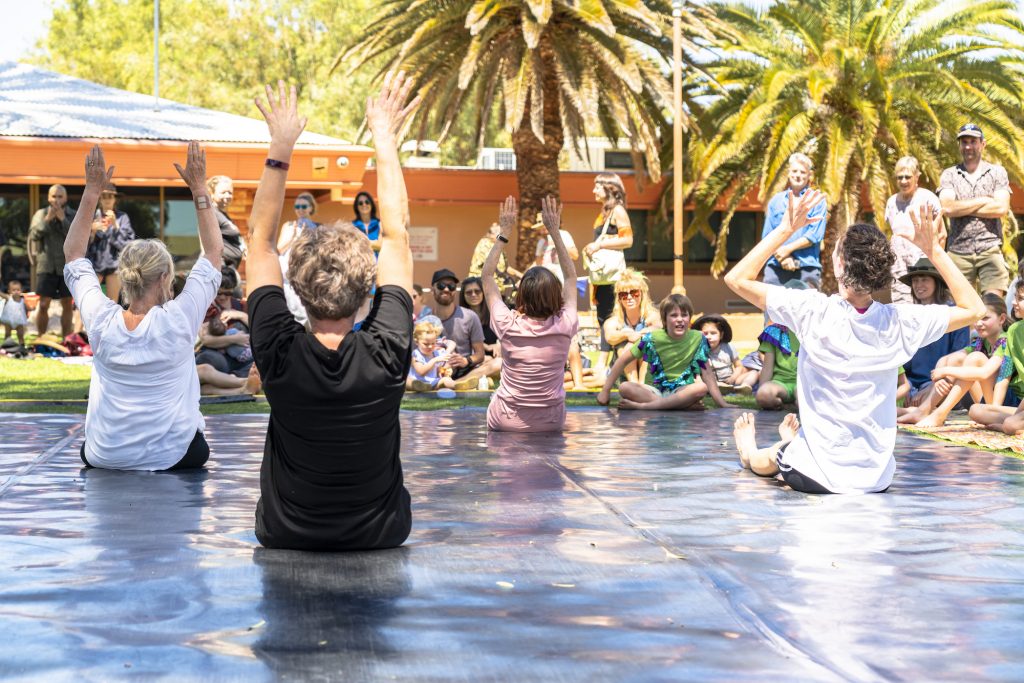
Having worked at a community level for 5 years now, most recently as a Program Coordinator and Community Development Officer for Blackall Tambo Regional Council, Jaimee-Lee Prow has experienced first-hand the generosity and good intentions that relief agencies have when it comes to drought in remote, rural, and regional communities. However, these good intentions often don’t translate into practical and accessible support at a grassroots level. Here she shares her story.
To paint a picture of what I mean, I’ll explain a bit about what our experience has been with relief agencies within the central western Queensland drought space. Off the top of my head, I can name at least 20 organisations that offer much the same kind of assistance. This overlapping service provision is driving a state of competitiveness among these organisations and, from a community perspective, has led to a matrix of issues that prevent community groups from taking them up on their offers of assistance. This, on top of a disconnect at a community level, has meant that these relief organisations are actually hindering themselves from reaching the goals that they set out to achieve.
We rural people are a stoic breed. This over-supply of relief support has led to a lot of miscommunication, confusion, and apprehension, resulting in people abstaining from seeking assistance. Or else people become overwhelmingly confused about how to navigate the many systems with most deeming it as an added stress that they simply don’t need. Another familiar scenario is that of individuals, community groups and local-not-for-profits who don’t apply for assistance through one organisation because they’ve already applied for similar assistance through another organisation, and they fear that it will be seen as ‘double dipping’.
Beyond the confusion and burdensome processes, rural communities often feel that these relief agencies fail to properly consider the demographic that they’re dealing with. A large portion of our graziers, primary producers, small business owners and community members are over the age of 65 years with many of them either being extremely hesitant about social media or else completely oblivious to it. Yet, many of these relief organisations use social media as their main tool for promotion and one of their primary platforms for getting information out there. It’s also common that applications for grants will exist predominantly online and even requests for assistance are virtual. As a result, a large portion of our drought impacted population are missing out on the valuable financial assistance offered by the relief agencies. So, a word of advice – this generation still rely on good old-fashioned word of mouth, and mainly prefer to trust “the local bloke”.
Charities, not for profits and non-government organisations can take action to shift from their traditional roles as relief agencies and move towards becoming partners who walk in lockstep with resilient and prepared communities. These relief agencies are, of course, well-meaning but most, if not all of them, are based outside of our region. Some of them even have a strictly virtual presence. Which is why, despite the obvious devastation of drought that surrounds us, they often walk away scratching their heads at the low levels of relief uptake after briefly popping up in our communities. The lack of local coordination and sharing of information on the ground is, ultimately, failing our rural communities.

So, how do we fix the problem?
The solutions aren’t necessarily innovative or complex. In fact, they’re quite simple. Below is a list of steps that relief agencies can take to provide effective support to our drought effected communities:
Step one: listen to the locals
As mentioned in the Red Cross Drought Resilience discussion paper, projects and program delivery from organisations need to be locally focused to meet the needs of the region they are working with. When it comes to providing assistance for our communities, blanket approaches simply don’t work and a ‘one-size-fits-all’ solution doesn’t exist.
Step two: we need more than just a plan for the future
We are really at a critical point within the community drought recovery process where we need to keep the momentum going and continue to create or maintain partnerships. Within my local community. I have recognised a shift away from the initial panic and knee jerk reactions to the disaster. Local individuals, groups, businesses, and farms are now ready to accept and explore actions they can take to prepare for future drought- something that wasn’t possible in the initial stages of drought response.
Our initial response was to flood funds upon our drought impacted communities. And this was evident in the amount of overlapping we saw in service provision from our relief agencies. Don’t get me wrong, to a degree we certainly needed it. But what we are starting to see or recognise now is that drought funding is starting to dry up, and services are beginning to wind back in our rural communities. This imbalance between community readiness and resources, and the funding now available is a major concern moving forward. In the disaster recovery and planning phase, we need the resources now more than ever to be ready for next time.
Step three: simple applications and greater flexibility
We need to ensure application processes are simplified and easy to access. This will benefit all sections of the community but is crucial if organisations want their programs to be accessible to applicants aged 65+. Secondly, because each region is different, the criteria grants need to be made more flexible so that projects can be locally defined by the communities themselves and can be used to support a cross section of activities such as infrastructure, events, training, capacity building and network development.
Step four: recognition of the role that local organisations play
Local organisations are the backbone of remote, rural, and regional communities. Therefore, programs need to be modelled around their goals and needs. In order for partnerships to be successful and meaningful to our communities, agencies must be personable within the community, and the program itself must be driven by the community that the agency is working with.
During my time working at Blackall Tambo Regional Council, I have worked closely with FRRR on a number of drought resilience initiatives. FRRR have championed solutions that have been led by our community and that are driven by the needs and abilities of those living in our region. I believe that this approach to disaster recovery is the way of the future.
Step five: events and projects should be led by trusted locals
This is the valuable way to connect, respond, recover and plan ahead. While some are of the belief that the community barbecue or the local arts and cultural workshop are a band-aid solution to relieving the impacts of drought, those from rural communities would actually beg to differ. We come from significantly isolated areas. These types of community events, particularly during drought, are a necessity for creating touchpoints, social check ins, networking opportunities, and they keep our communities connected.
Some of the most brilliant ideas for future proofing and planning are sprouted through general chitchat amongst like-minded people at these types of events. We are already seeing some relief organisations which have come into our region, begin to recognise these events and spaces as the perfect platform for informal networking and building a rapport with our community members. As a result, partnerships have become stronger, and we find that these organisations who take these extra steps have a better understanding of our community’s needs which results in a greater uptake of their services.
Step six: continued government and philanthropic support
As I’ve already mentioned, it’s crucial that relief agencies don’t simply pull the plug and let funding dry up. Our rural communities are now more than ready than ever to prepare and build resilient regions through planning and projects. We just need the continued commitment to fund and provide resources.
Step seven: build local champions
As an NFP, charity and non-government organisation you should be an active collaborator, but you should essentially be led by locals. Start building your local champions in the communities you were working with. They will be your best investment.
Finally, I’ll finish with something I heard once that I believe perfectly sums up the attitude we must approach the future with if we’re going to continue to build prepared and resilient communities: “You don’t need to be strong to survive a bad situation. You just need a plan.”
Ngangganawili Aboriginal Health Services (NAHS) is an Aboriginal community controlled organisation that plays an integral role in health service provision for the highly mobile population in the Central Desert Region. It delivers more than 10,000 episodes of health care per annum to up to 4,000 Aboriginal and non-Aboriginal clients on Martu country in remote Western Australia. NAHS is a critical first point of contact between the community and the WA health care system, operating since 1993 over an area of some 184,000 square kilometres.
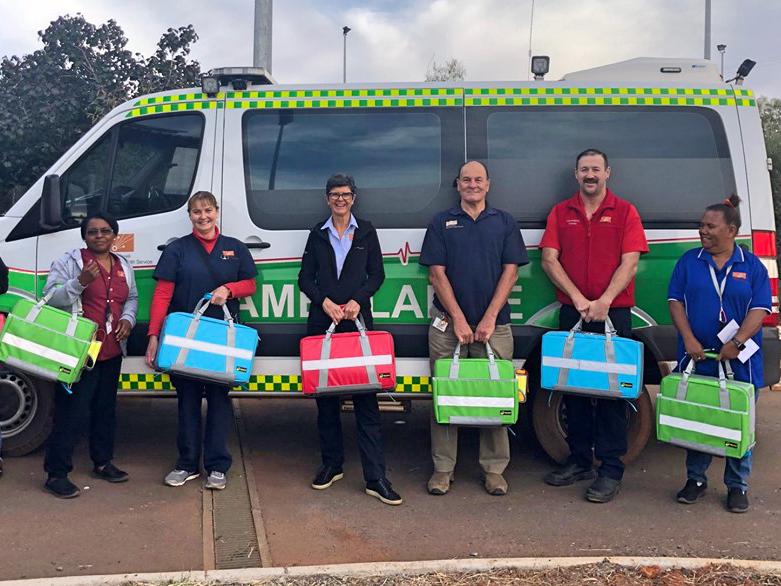
The Community Paramedics operate under a model unique to Western Australia: they not only provide traditional emergency ambulance care, but they provide in-home extended care services, so that patients are able to receive high quality health care in the home without needing to go to hospital. This also facilitates the ongoing review of patients’ conditions that would normally need to be managed in an in-patient setting or via multiple trips to a clinic.
Through the support of FRRR and its donor partner the Kapikarnpi Community Fund, NAHS was able to upgrade the response bags in both of the NAHS emergency ambulances. The bags in use were ageing and inconsistent with a mismatch of brands and styles, and they feared this could lead to confusion in an emergency when working in the different ambulances. They were also problematic to clean, cumbersome and not designed with ergonomics in mind, increasing the risk of injury to paramedics through manual handling incidents.
The $4,333 grant enabled the purchase of modern, fit for purpose ambulance kit bags. The new ergonomic bags have an internal layout which allows equipment to be laid out in a logical manner that protects the contents and allows easier access. Most importantly they are designed in accordance with AS4146-1994 Australian Standards for Laundry Practice, which allow for the cleaning of pathogens such as HIV, hepatitis and vegetative organisms. This new equipment assists in the provision of safer services for the community of Wiluna.
Community Paramedic Wade Bloffwitch said that, “Grants such as this are vital to the operation of community-controlled, not-for-profit health services across the country and NAHS thanks FRRR and its donors for their commitment to the community”.
Support needed now more than ever for communities hit by multiple disasters
Port Macquarie, on the mid-north coast of New South Wales, is just one of many towns reeling from the effects of cumulative disasters. In their case, it began in July 2019 with devastating bushfires that affected many communities across the region. The fires burned until January 2020. Homes, livelihoods and, sadly, lives were lost.
Then in March 2020, COVID-19 hit, decimating visitor numbers and the vital income they bring with them, and restrictions hampered bushfire recovery activities. These cumulative impacts meant many retailers, cafes, pubs, restaurants, tourism and accommodation providers were forced to let staff go or, for some, to close.
In March 2021 – with COVID-19 and bushfire recovery still ongoing – the region was inundated by a one in 100 year flood. Thousands of people were evacuated, and five months later, many have still not been able to return to their homes. Today, pockets of the community are still without electricity.
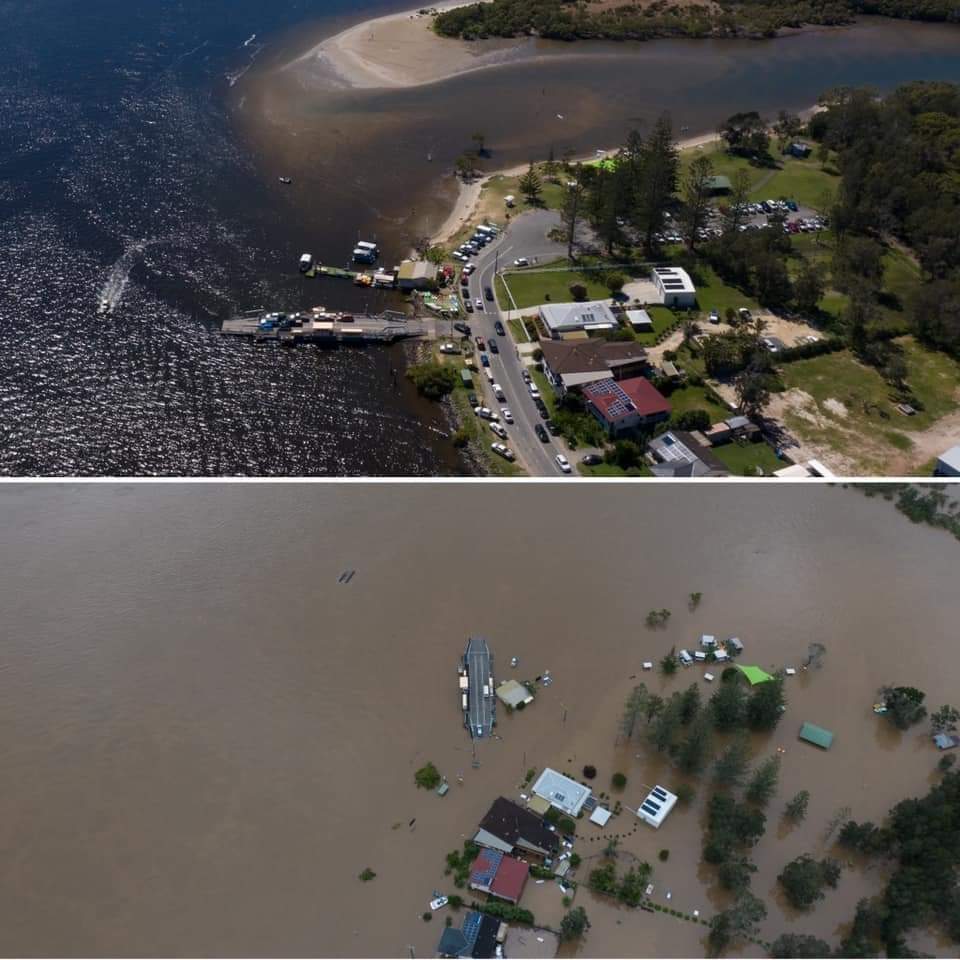
Fewer resources, but more to do
The struggle for small organisations trying to support their community is very real, even in normal times. So, when events like the bushfires, floods and COVID-19 place greater demands on their services, their capacity is challenged. But they fight on!
Make a Difference Port Macquarie (MAD PMQ) is a local support agency helping their community to respond to these events. Over the last year, they’ve had to work through how to do more, with fewer people. When COVID-19 hit, MAD lost their volunteer base almost overnight because most of their volunteers are elderly or retired and are very vulnerable. The pandemic also had a huge impact on the organisation’s fundraising. Like many small community organisations, MAD PMQ relies heavily on events to raise the funds required to deliver their services.
Volunteer Erin Denham said they generally run four or five fundraising events a year but were only able to run one in the last year, and that’s had a massive impact on revenue. MAD PMQ was supported by an FRRR grant that funded the stage for that event and the fit out of their mobile coffee van.
“When we got the FRRR grant, it took so much pressure off us as a charity – we hadn’t been able to run a fundraising event in nine months, and we couldn’t see a way out of COVID-19. The grant allowed us to continue our plan for our projects and support our community.”
As successive disasters have hit the community, MAD PMQ has adapted and expanded its role.
“Our focus has shifted dramatically since our inception,” Erin said. “It was originally homelessness. Now we’ve moved to supporting a wider range of disadvantaged people, so our work shifts and adapts based on the needs of the community and what’s happening around us, like fires or floods. The homeless population is transient, but there are just as many people in the community who need our help that go beyond that demographic.”
When the floods hit in March, their greatest priority was helping to address the immediate needs of those affected by the floods, particularly getting people back in their own homes by supplying white goods such as fridges, washing machines and ovens.
“It’s been a massive effort,” Erin explained. “We’ve raised approximately $50,000 so far, which we’ve since redistributed in white goods and other requests. But it feels like the funding is starting to dry up, and the demand is greater now than it was immediately after the floods.”
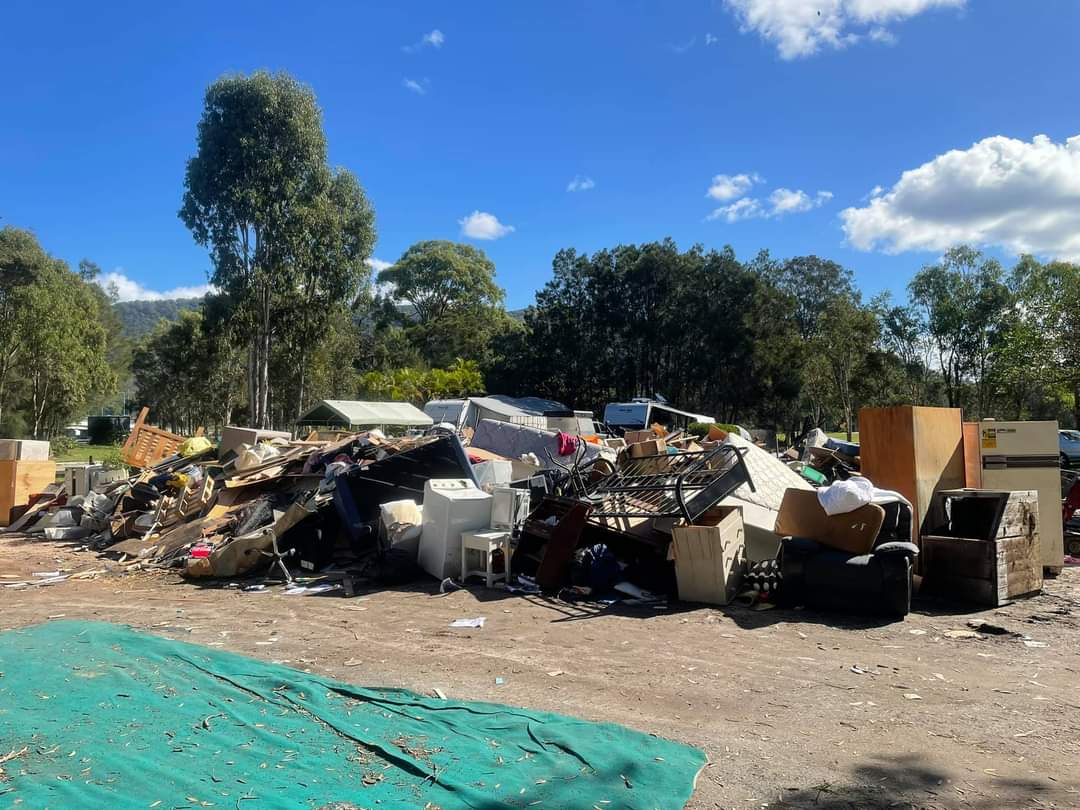
Emerging impacts
In fact, demand for MAD’s services is the highest they’ve ever seen, and Erin says she thinks it will continue to increase as the full impact of the “triple-whammy” of disasters takes effect.
Erin said that while there was lots of help immediately following the fires and floods from external organisations and agencies, the responsibility is now falling on the small organisations within the community to pick up the load and continue to meet the ongoing needs of a community impacted by natural disasters.
“Most of the people provided with emergency accommodation until the end of June or early July are starting to have to move on, and demand for assistance to MAD PMQ is increasing.
“Everyone’s gone back to business as usual, you can’t tell by driving through town that anything happened,” Erin said.
“Just last week we came across a gentleman who is still living in his flood-affected caravan, with no power or running water. His caravan was written off, but he’s got nowhere else to go. We provided him with a generator, so he at least has some power.
“And I’m aware of a 65 year old man who was living in a tent in his back yard, while his wife was in emergency accommodation. They were separated for months after the floods happened. The housing crisis and gentrification are big problems, with people relocating from Sydney, and many people being pushed out of the rental market. And while they might be eligible for grants, often they can’t meet all of the requirements that’s needed and therefore they miss out on funding.”
Erin said that support through FRRR, such as the new Suncorp Rebuilding Futures program, allows community organisations to be responsive in the aftermath of the situation. By offering funding support for charities like MAD, the program will allow them to help residents get back into their homes faster.
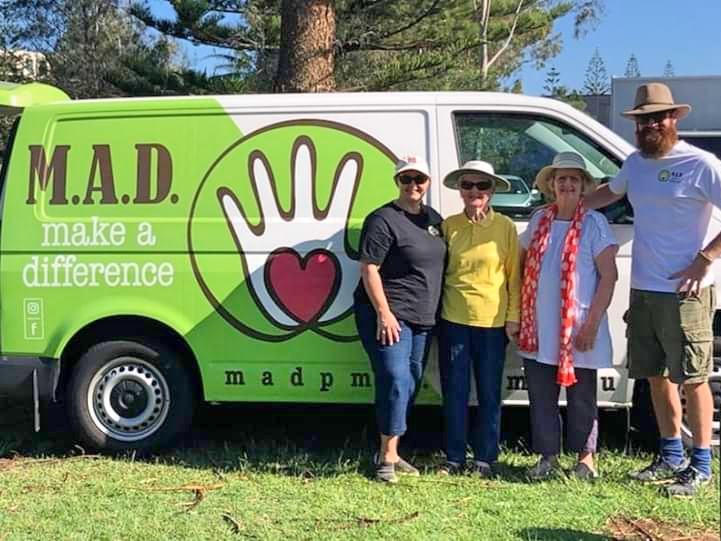
Images: Alex McNaught
$175,000 available to bring youth-led initiatives to life
FRRR is inviting remote, rural and regional community groups apply for grants of up to $10,000 to help fund projects that provide innovative solutions to five priority issues identified by participants at the inaugural Heywire Youth Ideas Lab, held recently in Broken Hill.
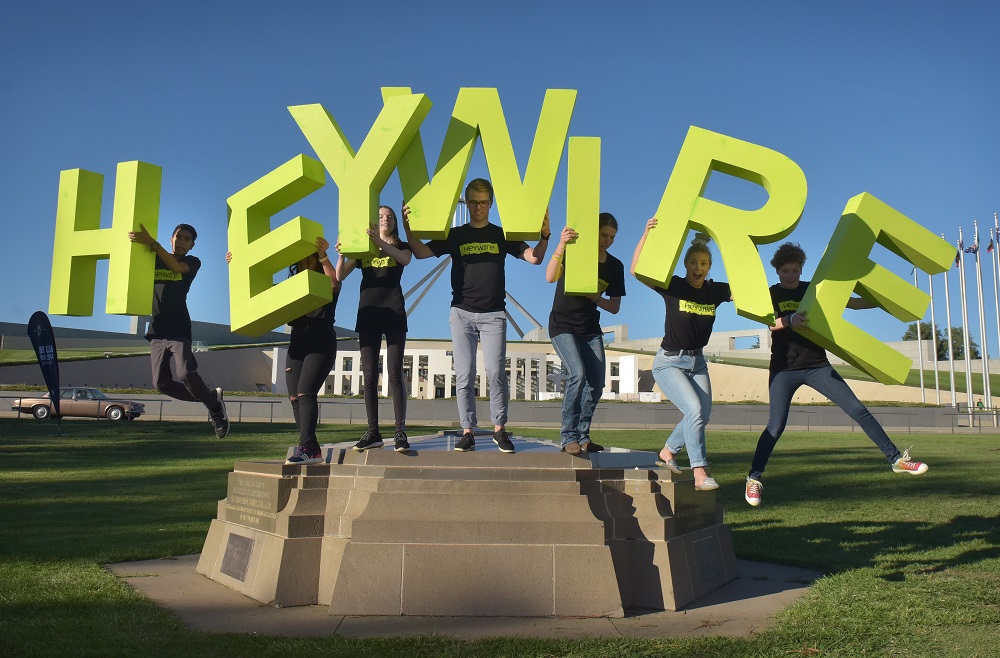
Since 2013, the FRRR ABC Heywire Youth Innovation Grants program has supported remote, rural and regional youth to address issues that matter most to them. To date, more than $1 million in community and philanthropic investment has helped to fund more than 130 projects in over 160 communities.
This year, due to COVID-19, the ABC needed to pivot their approach to how the ideas were generated. Typically, they come from the annual Heywire Youth Summit in Canberra, but instead, over three days 27 young local leaders from Broken Hill and surrounding regions came together. Broken Hill was chosen as the host town because it had the most entries in the annual Heywire story-telling competition. The young leaders learnt new skills, shared their stories, and workshopped ideas to help make rural and regional Australia an even better place for young people to live and work.
These ideas now form the basis of the FRRR ABC Heywire Youth Innovation grants, and include:
- Discover Your Future: Giving young people a chance to explore and learn more about their future career options.
- Open Field Fest: Bringing music, art and people together to help create a community-run music and arts festival.
- Support Squad: Training young leaders to provide support, knowledge and companionship to peers who may be struggling with a variety of challenges.
- The Story Link Project: Tackling discrimination through sharing diverse stories that help people within regional communities understand the impact of discriminatory language.
- Contribute to the Change: Helping young people improve their mental health knowledge and understanding, so they are confident to seek the help they need.
Natalie Egleton, FRRR’s CEO, said each year she is impressed by the ideas that Heywirers bring to the table, and this year is no exception.
“The five ideas developed by Broken Hill’s young people are insightful and meaningful and provide a snapshot of the issues currently faced by young rural people across Australia. The beauty of the FRRR ABC Heywire Youth Innovation Grants is that they fund projects driven by these young Australians’ ideas.
“We encourage community groups to engage with local youth when considering which idea to adopt and adapt. These capable young leaders understand local context and can help adapt an idea to best suit the priorities of local youth and assist in leading a meaningful project that will make their community more inviting and inspiring for other young people to live and work,” Ms Egleton said.
Youth Ideas Lab and Heywire participant Ashlyn speaks of how proud she is of herself and her Broken Hill community for coming up with the five ideas which were designed to combat challenges they themselves have faced.
“The Youth Ideas Lab was such an incredible and inspiring experience. I’m so glad our Broken Hill community was given the opportunity to come up with these ideas that will soon be turned into realities. These ideas were formed by our unique experiences; now it’s your chance to take them on in your own community. I can’t wait to see where they go and how they grow!”
This program is possible thanks to the generous support of FRRR’s donor partners, including The Sally Foundation, Erdi Foundation, Findex Community Fund, David Mactaggart Foundation, and private donors. This year, thanks to their generosity, $175,000 in grants is available.
Applications close Thursday, 19 August 2021 and recipients will be announced in early November. More information is available here.
Warddeken, an Aboriginal owned not-for-profit company, combines traditional ecological knowledge with Western science to manage and protect one of Australia’s most unique environments.

Arnhem Land covers 97,000 sq km of the top end of the Northern Territory.
During the second half of the twentieth century, many Traditional Owners were encouraged to move away from either remote parts of Arnhem Land and join missions, or larger communities to search for more ‘traditional’ work opportunities.
As a result, many parts of the area were left without people and ‘Country was orphaned’ – the term used for land without its people.
Over a number of decades fine-scale fire management was replaced by raging yearly wildfires, feral animals and invasive plants severely impacting the native species.
The plants and animals that make up the local ecosystems had previously evolved to rely on Bininj (the Aboriginal people of Western Arnhem Land), however the disruption in traditional Indigenous land management diminished the ecosystem and led to plummeting numbers of small to medium–weight mammals. This included culturally important species like djabbo / northern quoll and bakkadji / black-footed tree-rat. Refugia, including rainforest patches shrunk and fresh-water places were destroyed.
Getting things back on track
Warddeken is an Aboriginal-owned, not-for-profit company that combines traditional ecological knowledge with Western science to manage and protect one of Australia’s most unique environments.
Warddeken operates out of the remote homeland communities of Kabulwarnamyo, Manmoyi and Mamadawerre in west Arnhem Land. Each year up to 180 Indigenous rangers work on a variety of projects including fire management and carbon abatement, invasive weed and feral animal control, rock art conservation, education and cultural heritage management.
In 2010 Aboriginal Elders from the Warddeken and Djelk IPAs established the Karrkad-Kanjdji Trust to seek philanthropic sources of funding for land management and cultural projects.
Last year, they received a $15,000 Seeds of Renewal grant from ANZ and FRRR to help fund a network of cameras that look into the prevalence of djabbo (northern quoll) on the land to understand the impact of its own land management practices and programs on this priority mammal species.
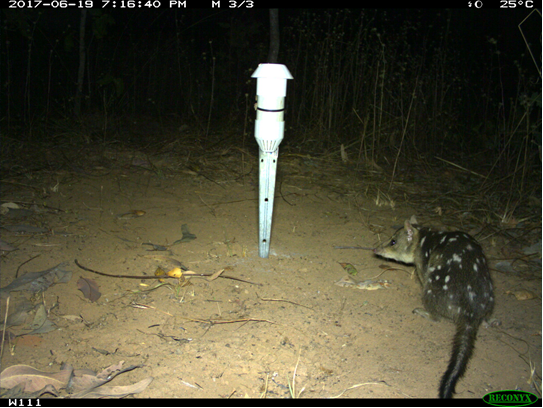
Curbing the decline
Djabbo populations identified by the monitoring project are actively considered in annual early burning and wildfire suppression activities, and are targeted for further investigation for the purposes of building population resilience.
With meaningful involvement and employment of landowners and rangers, Warddeken will seek to define quoll and major predator feral cat population density and distribution to inform the design of predator suppression strategies if required.
Indigenous rangers, living and working on Country, are best placed to curb the decline in native biodiversity loss and improve habitat for future generations.
Rangers in West and Central Arnhem Land tirelessly blend Indigenous ecological knowledge and western science to control threats and help native species begin to thrive in their natural environment.
CEO of Karrkad Kanjdji Trust, Stacey Irving says “Warddeken’s vision is to have healthy people living and working on healthy country. The generous support of the ANZ Seeds of Renewal program is helping rangers care for species like the Djabbo.’’
Terrah Guymala, Senior Warddeken Ranger adds, “When we, Bininj people, see animals, we get excited because they play a big role in our life through our ceremonies.
“This year we have seen lots of animals that we love, but we hope this number increases so we can physically show our children rather than relying on rock art to tell the stories,” Terrah says.
ANZ General Manager Business Banking Jenefer Stewart says the ANZ Seeds of Renewal program has been providing grants for important initiatives in regional and rural Australia for nearly 20 years.
“Each year I look forward to seeing the difference the grants are able to make in these communities, many of which find it difficult to access the resources they need to grow, develop and prosper,” she says.
Written by Karly Dwyer, ANZ
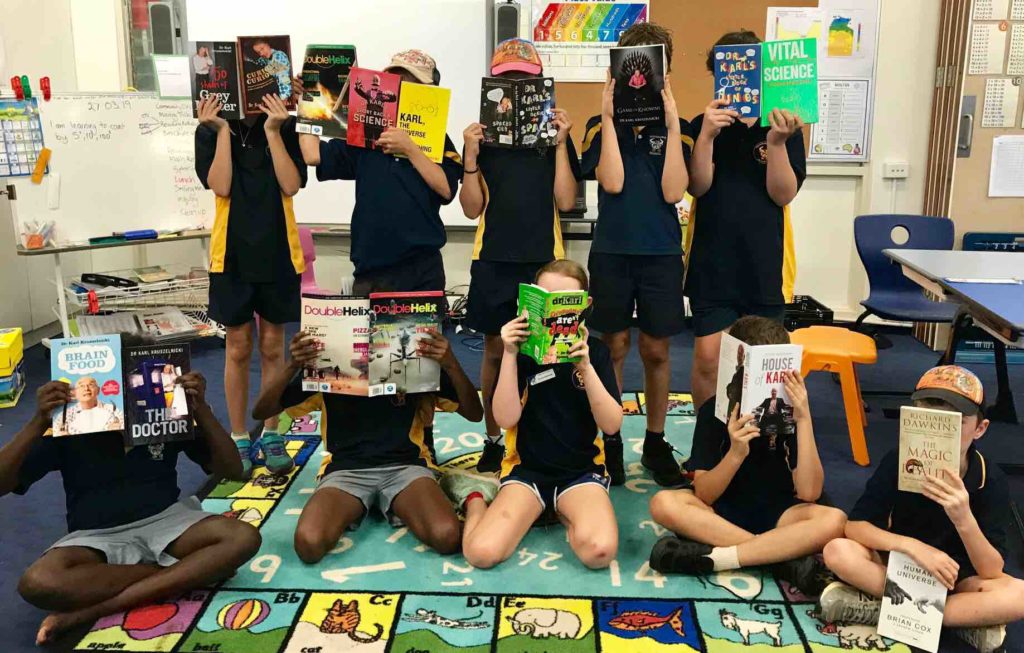
Did you know that some schools in remote Australian communities might have as few as 15 books in their library?
That discovery in 2017 prompted Corey Tutt to start sourcing and supplying resources himself, initially from his personal library. DeadlyScience Limited was established in 2020, and is now a registered charity. Through DeadlyScience, Corey is seeking to inspire a new generation of scientists.
It focuses on providing Science, Technology, Engineering, and Mathematics (STEM) and early learning reading resources to remote Australian schools to help increase engagement.
The initial priority is schools with a high proportion of Indigenous children. Where possible, and appropriate, DeadlyScience sources materials from Indigenous authors, artists, and translated versions in Indigenous languages. In the three and a bit years since inception, DeadlyScience has had more than 110 schools requesting resources.
They have delivered more than 16,000 books, 500 telescopes (and basic science kits), 80 educational resources and six greenhouses (plus seeds, and educational materials to support food production projects) to more than 100 Australian schools and/or communities.
This growth looks set to continue as the organisation gains more momentum and profile. Another key activity involves maintaining a website to support teachers in remote schools with access to high quality scientific research and relevant experts in their fields (also of Indigenous background, where possible).

In 2020, DeadlyScience partnered with FRRR to set up a Not-for-Profit Fundraising Account, allowing them to attract tax deductible contributions from a broad range of donors to expand their activities and support the overall capacity and operations.
You can add your support by donate securely online, or check out the DeadlyScience website to learn more about their work.
To learn more about opening a Not-For-Profit fundraising account, get in touch with Jo Kemp.
The Foundation for Rural & Regional Renewal (FRRR) has entered a new three-year partnership with the Kellogg Australia Charitable Foundation (KACF).
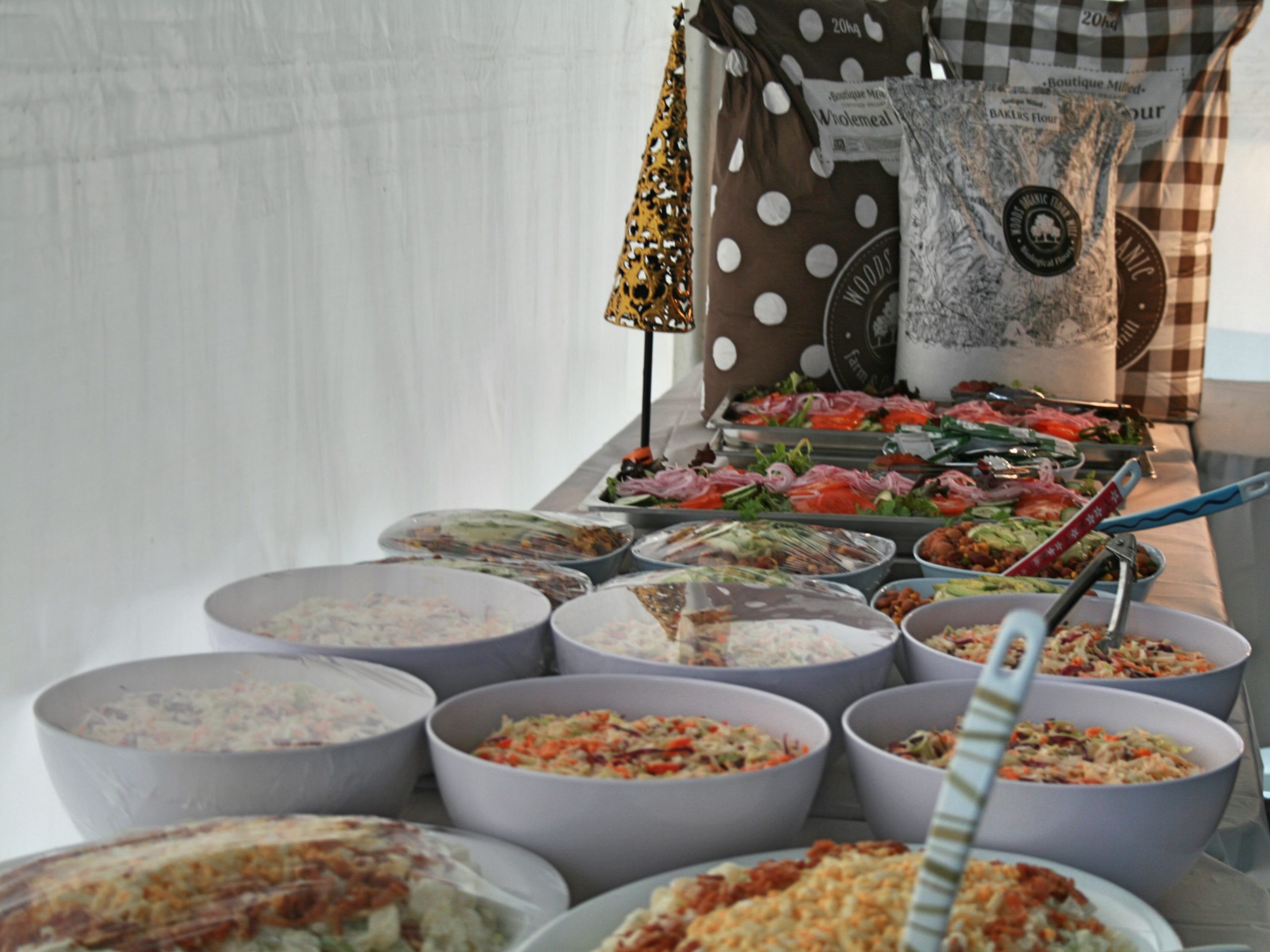
Creating better days for Australians, Kellogg Australia is committed to tackling hunger and helping to create a more sustainable future for generations to come. Now, with the new partnership between KACF and FRRR, their combined efforts can help tackle hunger and build resilience in vulnerable rural and regional communities throughout the country.
Over the course of the partnership, KACF will donate $300,000 to support grants going towards low socio-economic regions in need, and disadvantaged communities facing high levels of food insecurity.
The funds will be part of FRRR’s Strengthening Rural Communities program, which aims to give small remote, rural and regional communities across Australia an opportunity to access funding to strengthen their vitality and resilience. Grants are flexible and respond to community-identified priorities, such as food security.
In addition to the KACF funding, Kellogg Australia has also put forward in-kind support in the form of food donations, as well as skilled and unskilled volunteering from its employees.
Esme Borgelt, Managing Director Kellogg Australia, said, “The last couple of years have seen so many of our communities facing increasingly difficult times. From droughts to bushfires to a global health pandemic, the impact on everyone has been significant, and those hardest hit have been our remote, rural and regional communities.
“Almost a quarter of Australians experiencing food insecurity live in regional or remote areas and the aim of the KACF partnership with FRRR is to provide support at a grassroots level to help these communities implement innovative, locally led solutions.”
With FRRR being the only national foundation centred on social and economic strength in remote, rural and regional Australia, the partnership will help to tackle food insecurity with the knowledge and experience of the local needs by local leaders on the ground.
Natalie Egleton, FRRR’s CEO, said, “It’s fantastic to see a leading global food manufacturer like Kellogg’s make it their overarching mission to leave a mark of meaningful difference. We are delighted to be partnering with them to ensure that support reaches vulnerable communities beyond metropolitan boundaries.
“While the grants will be awarded based on locally identified community priorities, there will be a focus on supporting food security initiatives and enterprises, food affordability and food access programs, as well as projects such as community gardens and school and educational food programs,” Ms Egleton explained.

Clarence Landcare is located in regional NSW. Their mission is to promote sustainable land, agriculture, water, vegetation and biodiversity management practices and principles to their local community.
The largely volunteer-run organisation has been taking care of the land in the region for more than two decades. They regularly running community projects and initiatives focused on sustainable land care. The team also hosts workshops at their head office to educate and engage the wider community.
Located in the main street of Grafton, the Clarence Landcare office is in the 100-year-old Dougherty House. After the building was recently repainted giving the exterior of the building new life, it became clear that the interior was in desperate need of an upgrade.
Not only had the furniture been in use for more than 20 years, the team was also lacking basic essentials to help their meetings and workshops run smoothly. There was mismatching furniture and outdated technology made it very difficult for members to join meetings remotely.
The team applied to the FRRR Small Grants for Rural Communities program, and received a $5,000 grant to help them upgrade their workspace. The funding, made possible thanks to The Yulgilbar Foundation, provided improvements such as new blinds, couches, coffee tables, rugs and faux plants, giving new life to the old office.
In addition to the furniture, the funding was also used to purchase some much-needed technology, including a new iPad, Smart TV with a TV stand on wheels, web cam and microphone. This technology has enabled the team to dial into meetings remotely, making it easier for Clarence Landcare staff to stay connected digitally.
“I feel we are heading in a great direction now thanks to this FRRR grant, we don’t need to look like a poverty stricken not-for-profit organisation anymore. We now have the vision and committee support to keep improving our public face of Clarence Landcare. This will really help us gain confidence and attract clientele for future projects. The function of every new piece of equipment has far outweighed the predicted benefits,” said Landcare Officer Debbie Repschlager.

